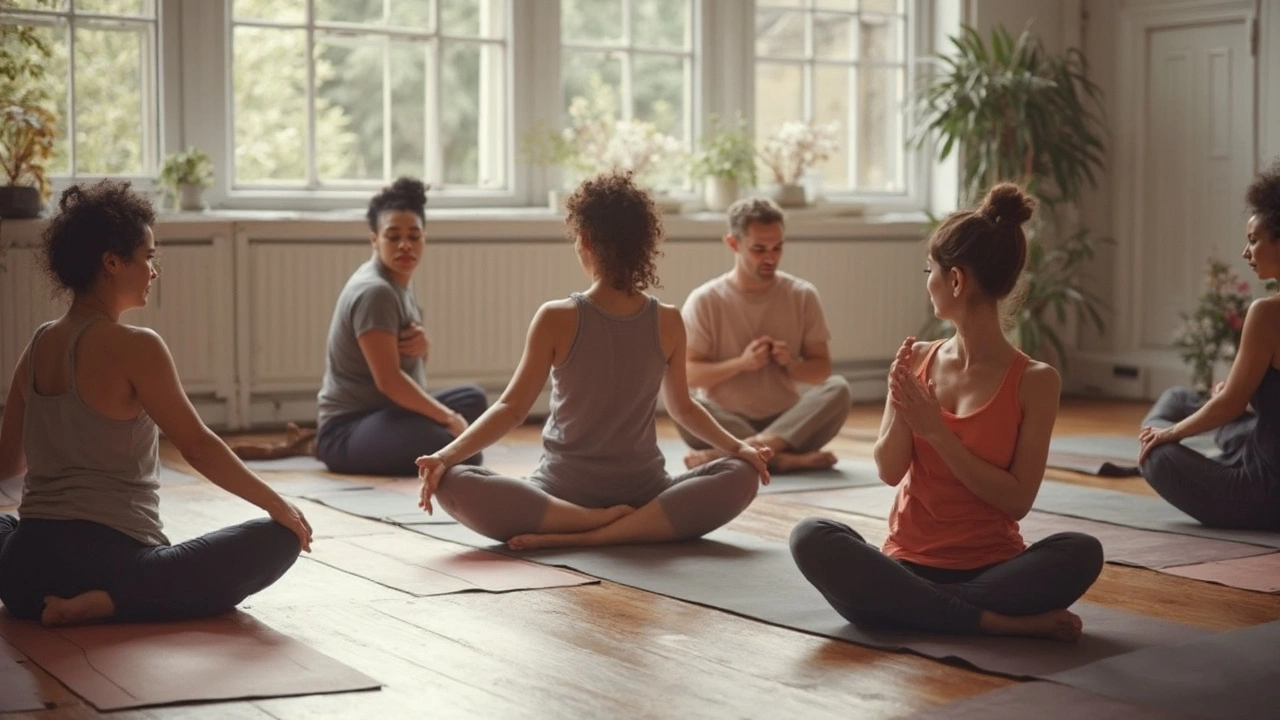If your body feels stiff, you struggle with nagging aches, or you’ve hit a wall with stretching and physio, you’re not alone. Countless people wake up to tight backs, limited movement, or coordination that just feels off. Feldenkrais training claims to offer a way out—but does it really unlock better body functionality, or is it just another wellness trend?
- Feldenkrais uses gentle movement and mindful learning to help you move smarter—not just harder.
- It aims to retrain your nervous system, so you gain new movement habits that actually stick.
- Regular practice means less pain, better flexibility, and finer control over daily movements—no spandex or sweat required.
- The method works for everyone: office workers, pro athletes, seniors, and kids.
- Real scientific evidence backs up its claims, with measurable improvements seen in posture, balance, and comfort.
What Is Feldenkrais Training and How Does It Work?
The Feldenkrais Method isn’t your standard exercise class—it targets how you use your body, not just how much you use it. Developed by Moshe Feldenkrais, it sounds mysterious, but at its core, it’s about rewiring movement patterns through mindful, guided motion. Picture dozens of gentle micro-movements designed to shake up your well-worn muscle habits. If you’ve ever caught yourself tensing your shoulders at your desk, this is the sort of habit Feldenkrais helps fix.
Practitioners lead you through two main types of sessions: "Awareness Through Movement" lessons, where you follow verbal instructions in a group, and "Functional Integration," which is hands-on and one-on-one. Both types nudge you to notice how you move (and, honestly, how you don’t), exploring things like rolling from side to side, shifting weight, or reaching differently. Many people are surprised by how challenging and satisfying it can feel, even when there’s barely any breaking of a sweat. You’ll uncover shortcuts and smooth ways of moving you didn’t even know you’d lost.
Unlike yoga or Pilates, there’s no pushing through discomfort, holding poses, or being measured against a perfect form. The focus is learning to sense what’s actually happening in your own body—which is more practical than it sounds, especially if you've ever thrown your back out from "good posture" advice.
The Practical Benefits: Why Feldenkrais Actually Works
Here’s where things get interesting. Feldenkrais isn’t magic, but its results can look like it—especially for folks stuck in the “just stretch more” trap. Scientific studies (there was one in 2015 in the Journal of Bodywork and Movement Therapies) show that Feldenkrais improves flexibility, reduces pain, and boosts overall movement quality. The trick? It taps into neuroplasticity—the brain’s ability to rewire itself based on new input. You’re teaching your nervous system, not just your muscles.
For instance, people with chronic lower back issues have reported less pain and better range of motion after a few weeks of Feldenkrais. Athletes use it for improved coordination and balance. Older adults find it helps prevent falls by making everyday movements less clumsy and more intentional. Parents see kids pick up better posture and confidence without heavy-handed coaching.
| Benefit | Typical Results Noted |
|---|---|
| Flexibility | Notably increases in hamstring, hip, and shoulder mobility after 6 weeks |
| Chronic Pain | Decreased pain scores in 70% of regular participants |
| Balance | Improved test scores for seniors and athletes by 15–25% |
| Posture | Postural muscle activity normalizes, slumping decreases |
| Body Awareness | Big improvements in mindful movement and self-correction |
The best part? You don’t need special gear, flexibility, or even a gym membership. Feldenkrais works for all ages, from school kids with sports injuries to my own mom, who can't stand the overstretching in regular yoga but loves the gentle pace of a Feldenkrais class. Amanda started doing short online sessions after her third marathon and swears her running technique actually improved—less bounce, less knee pain, more stamina. I’ve seen Imogen (our daughter) consciously sit and move at her desk for homework—something I wish I'd learned instead of dealing with years of neck twinges.
Feldenkrais vs. Traditional Exercise: Why It’s Different
If standard fitness has let you down, you’re not alone. Feldenkrais flips the script on standard workouts. Typical routines focus on reps, sets, or maximum effort. Feldenkrais throws that all out. Instead, you get slow, mindful repetitions where you focus on how the movement feels—almost like tuning up your nervous system. No burning muscles or sore joints, just new movement discoveries.
Unlike massage therapy or even physical therapy, you’re not dependent on someone “fixing you.” Each session teaches you tools you can use for daily life. Whenever you tense up, get stuck, or notice an old injury creeping back, you have the skills to sense and adjust yourself. Some folks combine Feldenkrais with sports or strength work for faster recovery and fewer injuries; others use it just to make walking or working pain-free.
To be fair, Feldenkrais isn’t a quick fix for everything. It takes curiosity and patience—if you want instant six-pack abs, you’ll need something flashier. But for tangible quality-of-life gains, its results speak for themselves.

How to Start Feldenkrais Training: Steps, Tips, and What to Expect
Ready to give Feldenkrais a shot? Here’s how to go from "never heard of it" to actually feeling the difference in your body:
- Find a Certified Practitioner: Search for teachers with Feldenkrais Guild certification in your area or online. The right fit matters.
- Choose Your Format: Group Awareness Through Movement classes are great for beginners. Private Functional Integration is hands-on and tailored—ideal if you have chronic pain or injuries.
- Dress for Comfort: You’ll do most lessons lying down, sitting, or standing, so wear loose clothes—think pajamas, not gym gear.
- Expect a Learning Curve: Some movements feel easy, others confusing; that’s normal. You’re breaking unhelpful habits, not competing for medals.
- Commit to Consistency: Beginners usually see changes after 4–8 sessions, but regularity (weekly or even daily short lessons) makes a bigger difference.
The cool part? Many Feldenkrais lessons are online now, meaning you can practice at home. Just make sure the sessions are from a legit source.
Checklists, Common Pitfalls, and Success Hacks
Getting results from Feldenkrais is less about effort and more about attitude. Here’s what helps most people stick with it and see real gains:
- Start each lesson with curiosity, not judgment. It’s about exploring, not fixing.
- Less is more; don’t force the movement, just notice and experiment.
- After lessons, pay attention to how you move during the rest of the day—walking, typing, reaching.
- Be patient: Subtle changes in awareness often precede big wins in flexibility or comfort.
- If a movement feels wrong or painful, skip it or make it smaller—adapt to suit your needs.
- Track what you notice: write down small wins like better sleep, easier bending, or feeling lighter on your feet. They add up!
Every expert I’ve talked to says the biggest mistake is rushing—trying too hard to “do it right” instead of listening to your body. I’ve made that mistake myself. When I relaxed, trusted the process, and focused on the feel rather than perfect form, my progress took off—and so did Amanda’s. She found that quieter, slower movements during lessons showed up later as more grace and efficiency in day-to-day life.
Mini-FAQ: Feldenkrais and Real-World Body Functionality
Is Feldenkrais safe for folks with injuries or chronic pain? Yes, because movements are slow, gentle, and adaptable, it’s widely recommended by physiotherapists and pain specialists—even for old or tricky injuries.
Do I need to be fit, flexible, or coordinated to start? Not at all. Feldenkrais meets you where you’re at. It’s meant for all bodies, all ages.
How soon will I notice results? Many notice little shifts in comfort or flexibility after just one session. For longer-lasting changes, 4–8 sessions is typical, and ongoing practice deepens results.
Is it only for people with back pain or joint problems? Absolutely not. Feldenkrais helps office workers, athletes, dancers, teens, seniors—anyone who wants to move smarter and hurt less.
Can I mix Feldenkrais with other forms of exercise? Yes, and many do. It can make strength training, running, yoga, and even daily chores more effective and pain-free.

Next Steps: Different Scenarios
- For beginners: Try a free online Awareness Through Movement lesson this week. Write down one thing you notice that's new.
- If you have chronic pain: Seek out a qualified Functional Integration practitioner for a few private sessions to create a gentle, custom plan.
- Athletes or active adults: Add weekly Feldenkrais to your routine. Use it before or after workouts to improve technique and recover faster.
- Busy parents or office workers: Squeeze in short daily lessons (even 10 minutes) to cut back on desk or parental aches. Watch for improvements in posture without "trying" so hard.
Unlocking the power of Feldenkrais is less about reps and sweat, more about moving smarter and living better. Give it a try—you might be surprised how much lighter life can feel.


 Health and Wellness
Health and Wellness